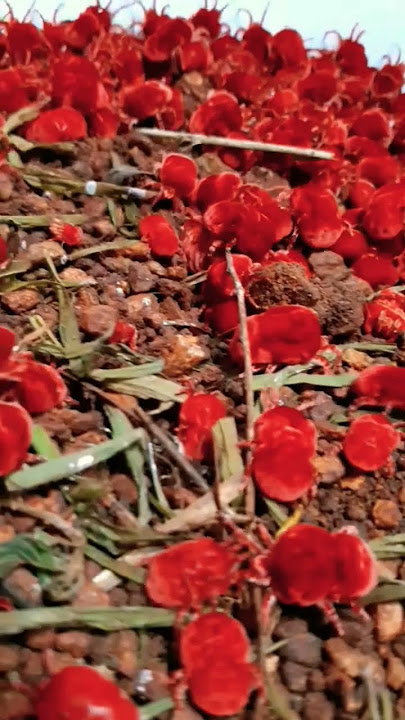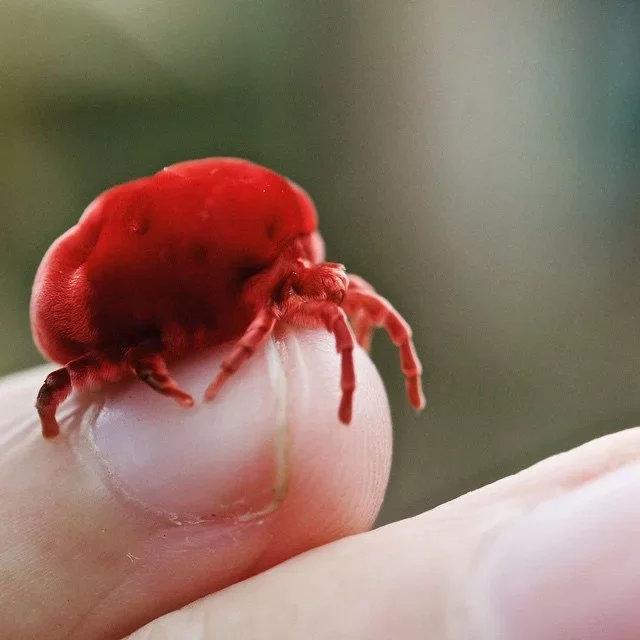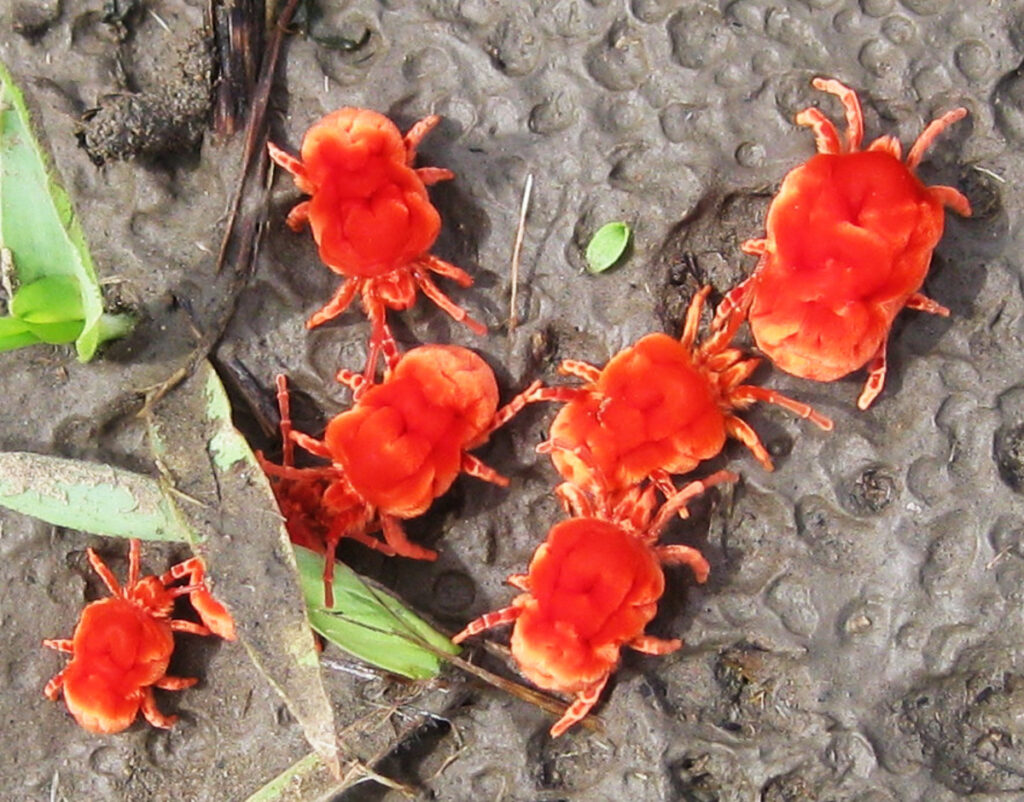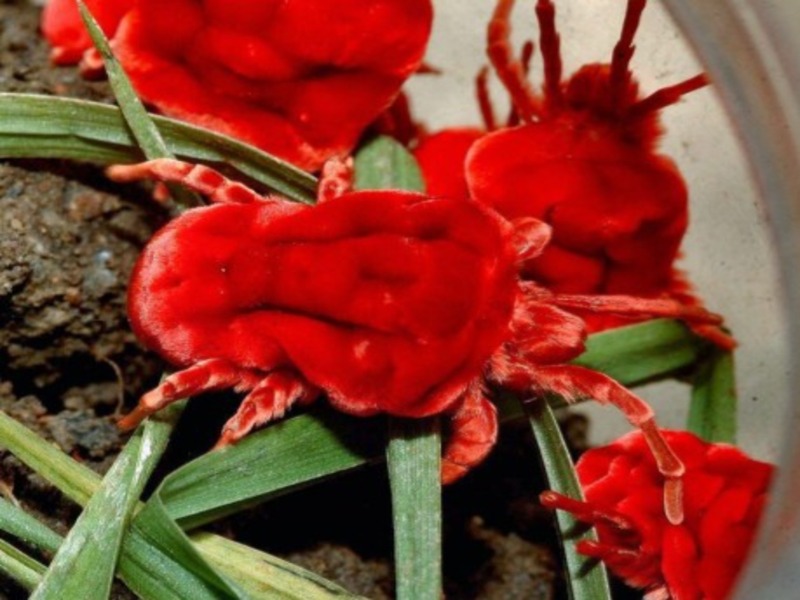In Telangana, children are fascinated by ‘Birbaboti‘, also known as the Red Velvet Mite. These vivid red, velvety creatures, emerging after monsoon rains, have become unconventional pets. This local trend blends cultural beliefs and nature, offering kids a unique, hands-on connection to the natural world.
In the vibrant and culturally rich state of Telangana, India, where traditional practices and modernity often merge seamlessly, an unexpected yet fascinating trend has emerged among children. This trend centers around a small, vivid creature known locally as ‘Birbaboti’ or more scientifically as the ‘Red Velvet Mite’. Though not typically associated with domestic companionship, this bright red arachnid has become a beloved and curious pet for many young enthusiasts in the region.
The Red Velvet Mite: A Natural Marvel
Red Velvet Mites, scientifically referred to as Trombidium, belong to the subclass Acari within the arachnid class. They are distinguished by their striking red color and velvety texture, which makes them visually appealing. These mites are commonly found in the soil, especially in gardens and agricultural fields, where they play a significant ecological role. They are predators of small insects and other arthropods, helping to maintain a balance in the ecosystem by controlling pest populations.
These mites are particularly noticeable during the monsoon season in Telangana, when they emerge in large numbers following rains. This period of emergence, combined with their bright color and soft texture, makes them easily noticeable and intriguing to children.
Cultural Significance and Local Beliefs

In many parts of India, including Telangana, Red Velvet Mites are not just a curiosity; they carry cultural and mythological significance. They are often associated with auspiciousness and are believed to bring good fortune. This belief likely stems from their vivid red color, which is traditionally linked with prosperity and positive energy in Indian culture.
In some local traditions, children are encouraged to play with these mites, which are harmless to humans. This interaction is thought to bring good luck and is a practice passed down through generations. The mites’ gentle nature and the absence of any known harmful effects on humans make them suitable for handling, thus facilitating their status as ‘pets’ among children.
The Unlikely Pet: A Child’s Perspective
To a child, the world is full of wonder, and the Red Velvet Mite embodies this curiosity. Unlike conventional pets like cats, dogs, or birds, Red Velvet Mites are easy to find and require minimal care, making them accessible to children from all socio-economic backgrounds. The process of catching these mites, often in small jars or containers, provides a simple yet engaging activity that connects children to nature.
Children are fascinated by the mites’ bright color and slow, deliberate movements. The tactile experience of handling these soft, velvety creatures also adds to their appeal. In a world increasingly dominated by technology, such interactions with nature can provide essential developmental benefits, fostering a sense of empathy and responsibility towards living creatures.
Ecological Role and Importance

Beyond their cultural and aesthetic appeal, Red Velvet Mites serve an important ecological function. They are part of the soil microfauna and play a role in the decomposition process. By feeding on other small insects and mites, they help control pest populations, which is particularly beneficial in agricultural settings. This predatory role supports the health of crops by reducing the number of pests that could potentially damage them.
The presence of Red Velvet Mites is also an indicator of soil health. Their abundance often signifies a rich and biodiverse soil ecosystem. This aspect has led some environmental educators to use these mites as a tool to teach children about the importance of biodiversity and ecological balance.
The Broader Implications of the Trend
While the trend of keeping Red Velvet Mites as pets may seem trivial at first glance, it reflects broader societal and cultural dynamics. It highlights a connection between local traditions and modern childhood experiences, illustrating how traditional knowledge and practices continue to find relevance in contemporary settings.
Moreover, this trend underscores the role of informal education in shaping children’s understanding of nature and ecology. In an era where environmental concerns are increasingly pressing, such practices can instill an early appreciation for biodiversity and ecological sustainability. This awareness is crucial as today’s children will become tomorrow’s stewards of the planet.
Challenges and Considerations

Despite the benign nature of this trend, there are some challenges and considerations. One concern is the potential impact on the local mite population if they are collected in large numbers. While currently, there is no evidence of a significant impact, it is important to monitor such activities to ensure they do not inadvertently harm the local ecosystem.
Another consideration is the need for proper education about these creatures. While they are generally harmless, children and parents should be informed about the mites’ ecological role and the importance of not disrupting their natural habitats excessively.
The phenomenon of children in Telangana keeping Red Velvet Mites, or ‘Birbaboti’, as pets is a unique intersection of culture, nature, and childhood curiosity. This practice not only brings joy and wonder to children’s lives but also serves as an informal educational experience about the natural world. As with any interaction with wildlife, it is essential to approach this trend with mindfulness and respect for the creatures involved and their ecological roles.
Ultimately, the story of the Red Velvet Mite in Telangana is a testament to the enduring human fascination with the natural world and the ways in which traditional knowledge continues to shape and enrich our lives. It is a reminder of the simple joys of nature and the importance of fostering a connection with the living environment from a young age. #hydkhabar

